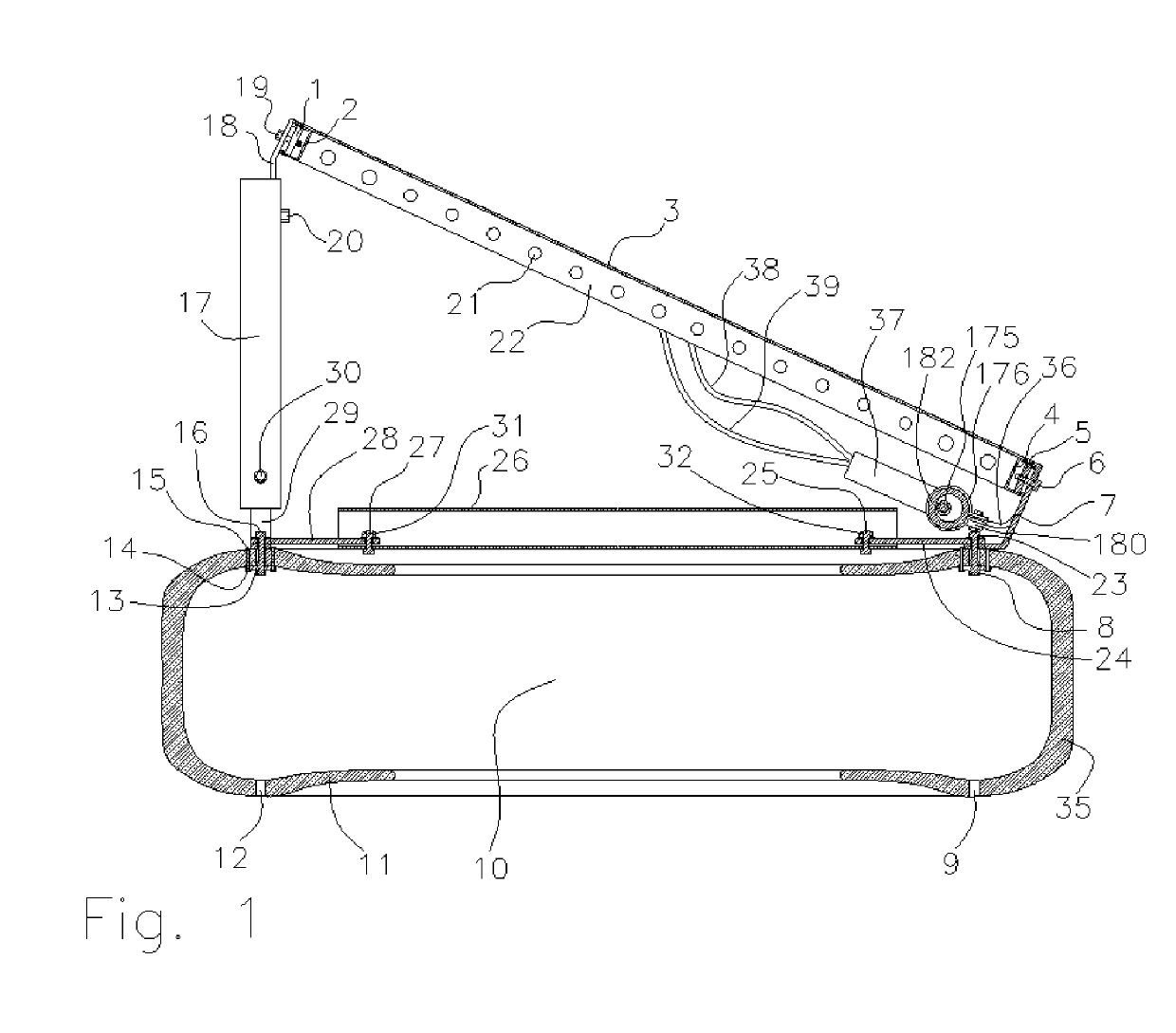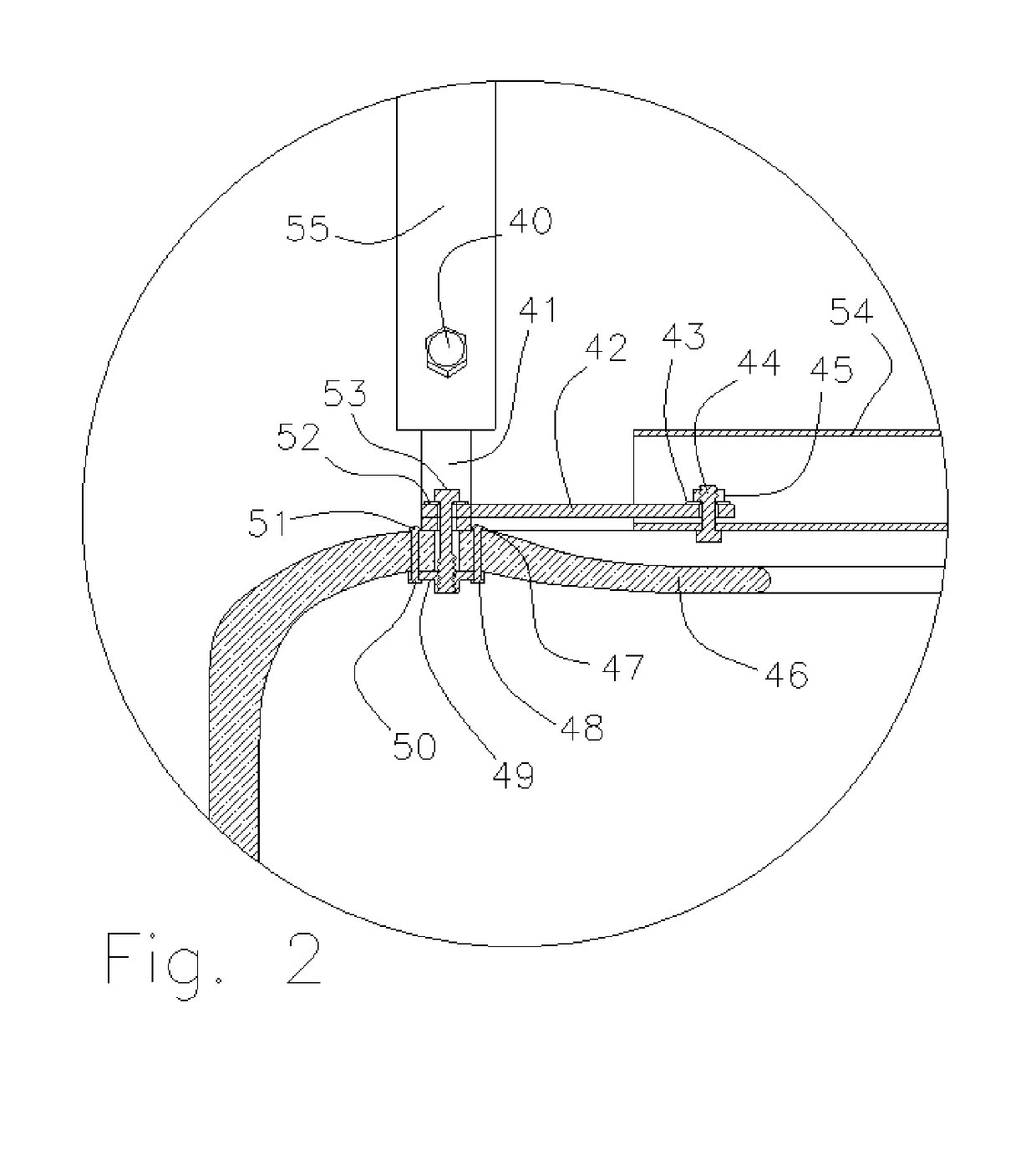Photovoltaic module mounting to rubber tires
a photovoltaic module and rubber tire technology, applied in the direction of solar heat collector details, lighting and heating apparatus, greenhouse gas reduction, etc., can solve the problems of high disassembly cost and inability to easily compact, and achieve the effect of reducing the peak force of the panel
- Summary
- Abstract
- Description
- Claims
- Application Information
AI Technical Summary
Benefits of technology
Problems solved by technology
Method used
Image
Examples
Embodiment Construction
[0025]Several embodiments of the invention are illustrated with variations in assembly and arrangement. The following numbers identify elements within the drawings:
[0026]FIG. 1 Cross-sectional view of photovoltaic panel mounted to rubber tire.[0027]1. Sliding nut[0028]2. Channel beam (Unistrut)[0029]3. Photovoltaic panel glass and photovoltaic cells laminate[0030]4. Channel beam (Unistrut)[0031]5. Sliding nut[0032]6. Bolt[0033]7. Bent plate[0034]8. Hanger flange[0035]9. Drain hole[0036]10. Interior of tire[0037]11. Side wall of tire[0038]12. Drain hole[0039]13. Hanger flange[0040]14. Blind rivet expansion end[0041]15. Blind rivet flush head[0042]16. Bolt[0043]17. Metal tube[0044]18. Bent plate[0045]19. Bolt[0046]20. Nut[0047]21. Air flow holes in heat sink fin[0048]22. Back surface of photovoltaic heat sink fin[0049]23. Bolt[0050]24. Plate[0051]25. Bolt[0052]26. Cross-section of tube[0053]27. Bolt[0054]28. Plate[0055]29. Bent plate[0056]30. Nut[0057]31. Nut[0058]32. Nut[0059]33. Glu...
PUM
 Login to View More
Login to View More Abstract
Description
Claims
Application Information
 Login to View More
Login to View More - R&D
- Intellectual Property
- Life Sciences
- Materials
- Tech Scout
- Unparalleled Data Quality
- Higher Quality Content
- 60% Fewer Hallucinations
Browse by: Latest US Patents, China's latest patents, Technical Efficacy Thesaurus, Application Domain, Technology Topic, Popular Technical Reports.
© 2025 PatSnap. All rights reserved.Legal|Privacy policy|Modern Slavery Act Transparency Statement|Sitemap|About US| Contact US: help@patsnap.com



